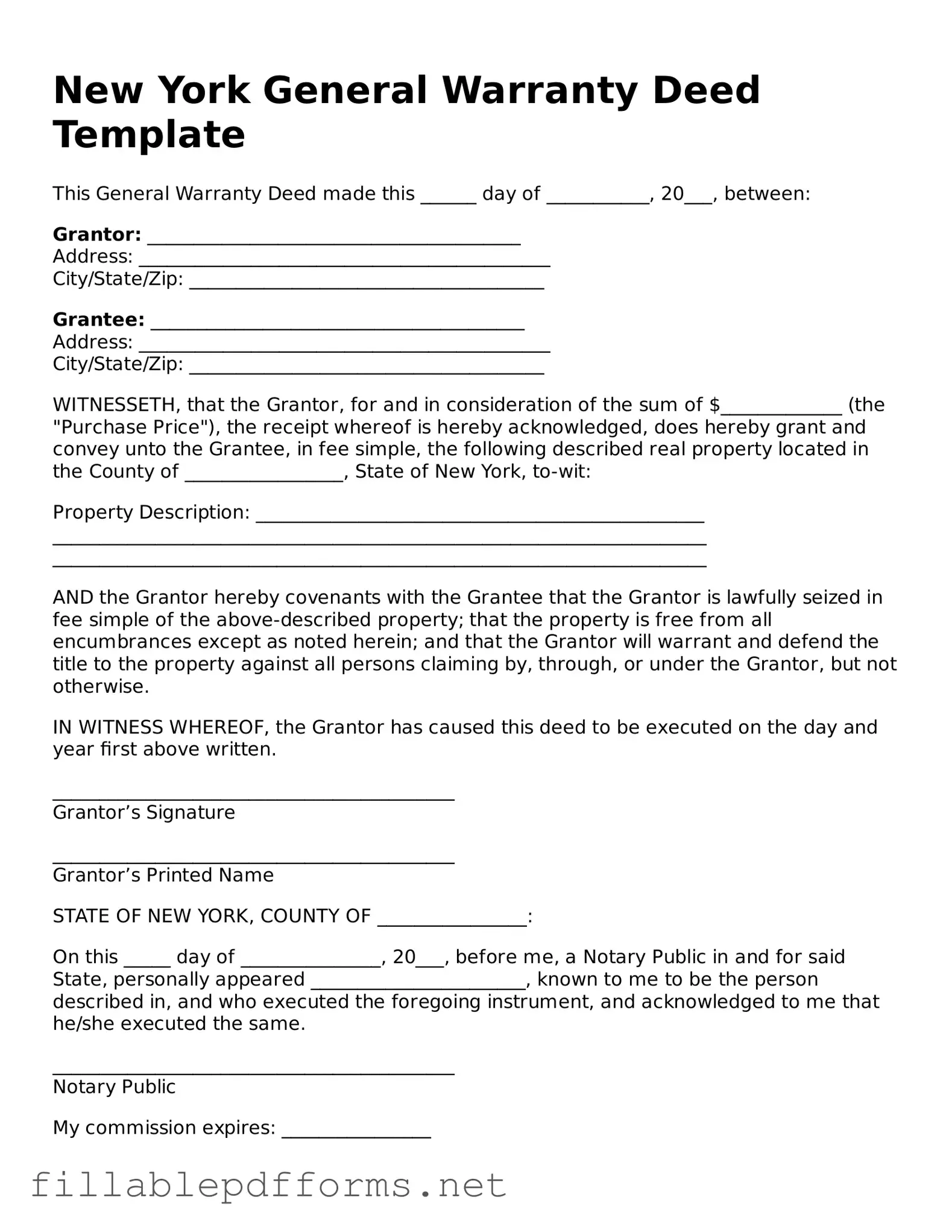The New York Deed form serves as a crucial legal document in the transfer of real property ownership. This form typically includes essential details such as the names of the grantor and grantee, a description of the property being transferred, and the consideration, or payment, involved in the transaction. It is important to note that the deed must be signed by the grantor and may require notarization to ensure its validity. Furthermore, the form often includes specific covenants that outline the rights and responsibilities of both parties involved. Depending on the type of deed, whether it be a warranty deed, quitclaim deed, or another variant, the rights conveyed can vary significantly. Additionally, the New York Deed form must be filed with the appropriate county clerk's office to provide public notice of the ownership transfer. Understanding the components and requirements of this form is essential for anyone involved in real estate transactions in New York.
